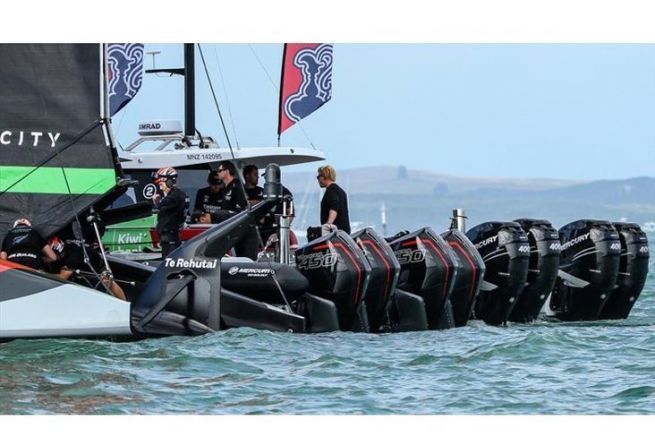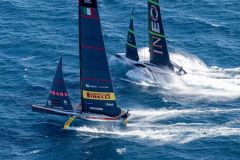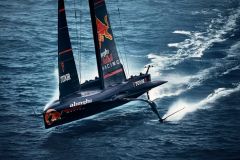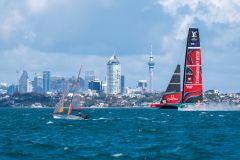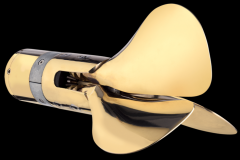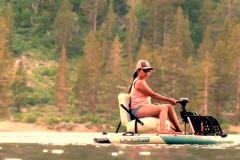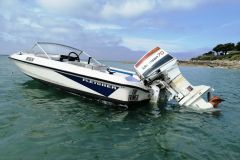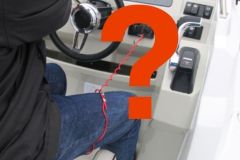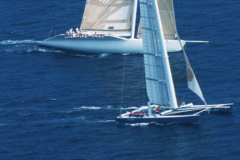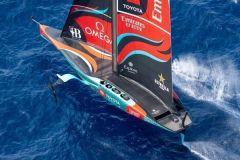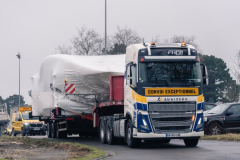It all started with a photo. The one that illustrates the tenders of Team New Zeland on the 2021 America's Cup. It shows two motorized tenders with Mercury speedboats. The first has 4 x 450 hp while the second has (only...) 4 x 400 hp. The question arises: is this really reasonable to accompany a sailing race?
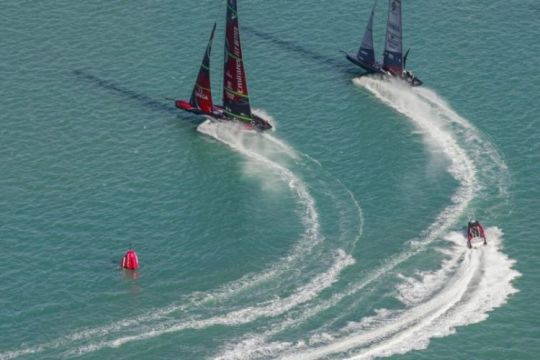
Too many speedboats killing the image of the sail?
Sailing has always had an image of being a "clean" sport. We use the wind to move around and try to go as fast as possible. The latest technological developments, especially foils, have made it possible to gain speed. By relieving the strain on the hulls of the boats, foils save precious knots and the speeds of the new machines are close to 50 knots. To keep up with them, accompanying boats are increasing their motorization. To the extreme?
For Team New Zeland alone in the America's Cup, the accompanying boats have 3900 hp at the bottom of their bows... At full throttle (and they are often at full throttle to keep up with the boat at nearly 50 knots), these three boats consume 1300 l/h! This is for a single team (this year the Cup has 4 teams).
The same goes for SailGP, a race which brings together 8 one-design F50 flying catamarans (former America's Cup boats). The race organiser comes in with a fleet of 18 RIBs and more than 7000 hp on the transoms. All this to follow only 8 boats?
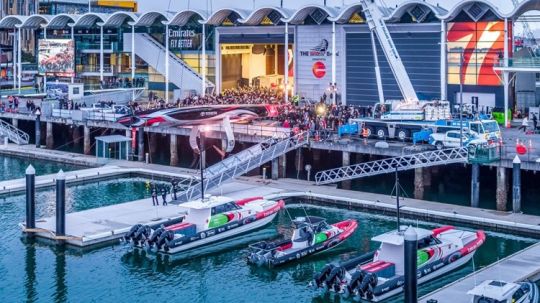
Increasing the power of the engines to follow the sailboats on their foils
With this new generation of very fast sailing boats, the engine manufacturers of the accompanying boats are faced with a problem: To go fast and keep up with the America's Cup boats, the tenders must be long (around 10 m). If they are long, they are heavier. And this increase in weight requires a high engine power. CQFD. So much so that inboard engines are no longer powerful enough and must make way for outboard motors.
Alas, this deployment of large speedboats on the transoms gives a counter-image to the one the sponsors want to convey through sailing. However, there are solutions, unfortunately not yet available, but which are just waiting to be developed.
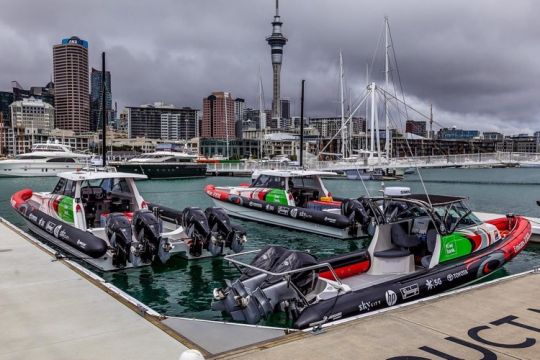
Tomorrow, tenders on foils with an electric motor?
Indeed, if sailing boats accelerate once perched on their foils, why not do the same with the motor boats that follow them? The foils limit drag in the water and require much less power to navigate, both under sail and motor. It would no doubt be up to the race organisers to demand (force?) that they equip them to do research and investment in this area. Electric motorisation could also be considered, no doubt combined with foils.
Let's hope that all the teams who scour the water will quickly become aware of this so that sailing remains a water sport in tune with its image.
